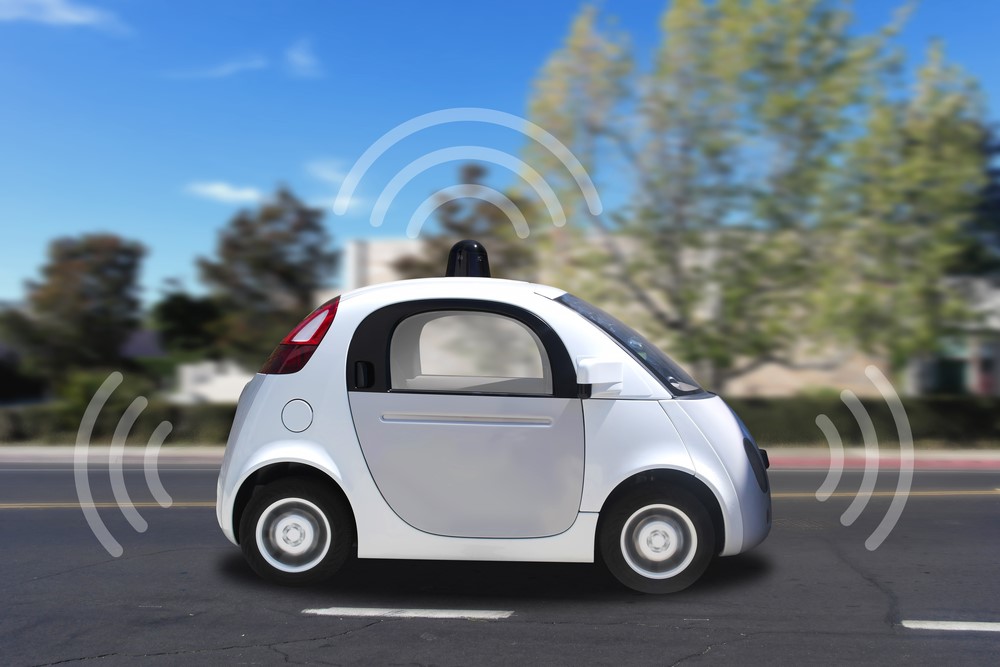Driverless Cars Are Coming. Here’s What to Expect

Imagine commuting to work while catching up on your favorite TV show, reading the paper, or checking email. Millions of people do this daily while using public transportation to commute to work.
Now, imagine all the multi-tasking — along with luxuriant coffee drinking — inside the peace and quiet of your own car. You program your destination, your car chooses the least congested route, and you skip the stress ulcers from dealing with traffic.
Driverless cars aren’t science fiction anymore. They’re already on the road. In the U.S., Google has long been developing and testing driverless cars. Apple and Tesla, according to Time Magazine, may develop their own driverless cars, too.
How They Work
A car without a driver needs four components to safely navigate traffic: a GPS system, external sensors and cameras, a central computer, and connected vehicle technology.
GPS
Today’s GPS systems, whether they’re part of a car or within our smart devices, enable drivers to input a destination and determine the optimal route. The same technology humans already use creates a plan of action for driverless cars. GPS can also update the planned route in real time based on changing traffic conditions.
External Sensors and Cameras
Driverless cars use video cameras to read road signs, detect stoplights, notice other vehicles, and avoid pedestrians. They also use sensor technology to adjust to dynamic road conditions:
- Radar sensors. Radar monitors the position of nearby vehicles. If you buy a car today that features adaptive cruise control, it’s using the same radar technology as a driverless vehicle.
- Lidar sensors. By bouncing pulses of light off the car’s surroundings, lidar sensors detect both lane markings and road edges.
- Ultrasonic sensors. Ultrasonic sensors come in handy when driverless cars attempt to park. They detect both curbs and other vehicles to avoid parking-related collisions.
Central Computer
The CANbus (controller area network) analyzes all GPS and sensor data. It then interprets data to control steering, braking, and acceleration. Cars have had central computers for decades to analyze vehicle status, so driverless cars simply build on existing computer systems in today’s vehicles.
Connected Vehicle Technology
Car manufacturers are building the framework for connected vehicle technology, which essentially makes cars able to communicate with one another. The U.S. Department of Transportation expects big improvements to safety, emissions controls, and congestion thanks to intelligent tracking systems in cars.
- Intelligent tracking systems will help both traditional and driverless cars avoid accidents. They’ll warn of merging vehicles, sudden braking, or vehicles hidden in a driver’s blind spot.
- Eliminating unnecessary stops and starts thanks to communication between cars will improve fuel efficiency.
- In addition to helping cars find optimal traffic routes, intelligent tracking systems will help drivers identify last-minute ride sharing opportunities and detect open parking spaces. Best of all, transportation officials can use the swarm of data connected vehicles generate to understand traffic patterns, improve roads, and make travel more efficient.
Challenges
Right now, the biggest obstacle to driverless car adoption is what it’s trying to replace: human drivers. Driverless cars follow the letter of the law. They stop for pedestrians and patiently wait their turn at four-way intersections.
Unfortunately, humans aren’t always the best drivers, and they don’t always follow the rules. When driverless cars stop at crosswalks, they get rear-ended. When no one completely stops at four-way intersections, driverless cars don’t know when to go.
Also, driverless cars swerve to avoid collisions in ways that seem unnatural to human drivers. One Google driverless car, for example, approached a red light and detected an oncoming car traveling over the speed limit. The Google car jerked to the right to prevent a crash, but the oncoming car stopped in plenty of time. These unusual and unnecessary swerves can cause chain reactions because human drivers don’t expect them.
When They’re Coming
Even with these glitches, Google predicts driverless cars will be on the road by 2020. Research from Boston Consulting Group suggests 1 in 5 drivers would pay $4,000 extra for driverless car technology, and 44 percent of U.S. consumers would purchase a driverless car within the next 10 years.
Still, consumers often say they’re enthusiastic about new technology, but old habits die hard. Case in point: electric and hybrid vehicles account for only 0.8 percent of new car registrations.
